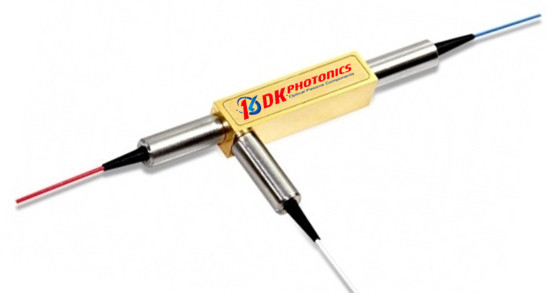The ‘optocirculator’ commonly known as optical circulator is the circulator which is majorly used for optical communication. It is actually similar to the isolator but, optical Isolator is used to insert resistance to the reverse signal with loss of insertion whereas, optical circulator directs the light to one port and diverts it out to the non-reciprocal port. Isolator typically has 2 ports only while circulator has 3 to 4 ports.

Originally, polarization insensitive optical circulators were used in telecommunication systems in order to increase the capacity of transmission of existing networks. The Utilization of these circulators in a bi-directional transmission system can double the network’s transmission capacity without deploying extra fibers, earlier, this task was very expensive without optical circulators.
However, the uses of optical circulators have greatly expanded in not only the telecommunication sector but also the imaging and sensing industries with the quick and great advancement in optical communication technologies and the wide availability of high-performance circulators at lower costs. Optical circulators have now become a vital element in advanced optical networks.
Typical Specifications for Optical Circulator:
- Grade type (P or A)
- Number of Ports (3 or 4 ports)
- Insertion loss (0.6/0.8) over +/- 20 nm bandwidth
- Central Wavelength (1310nm or 1550nm)
- Directivity (60 dB)
- Power handling limit (300 mW)
- Isolation (min.40dB)
- Return Loss (60 dB)
- PDL (0.1 dB)
- WDL (0.2 dB)
- PMD (0.1 ps)
Optical circulators are intensively powerful devices that are generally used to extract optical signals from a reflective device. In this manner, optical circulators are regularly utilized related to the fiber Bragg gratings that are ordinarily reflective devices. Together with fiber Bragg gratings, optical circulators have turned out to be one of the vital components in advanced DWDM optical systems. Circulators are utilized as MUX/DEMUX systems, but at the same time are utilized in dispersion compensation with the fiber Bragg grating, tunable optical Add/Drop, and other different applications.
The idea has been adapted into different devices, such as replacing the coupler and erbium-doped fiber with a dispersion compensation fiber to reduce the required fiber length and adding a Faraday rotator in-between the fiber and mirror in order to reduce the polarization-induced effects. Also, bi-directional fiber amplifiers are also proposed for taking full advantage of the polarization insensitive optical circulator.
With the improvement in advanced optical systems, the uses of optical circulators are extending quickly and new uses and applications are rising rapidly. For instance, as of late it has been accounted that by including wavelength-specific capacities into circulators, a bi-directional wavelength-subordinate circulator can be arranged, which opens another measurement of uses in the advanced DWDM optical systems.
These circulators are widely used for several other applications and this why they are extensively available at the stores as well as online. Due to increase in demand, there are thousands of manufacturers and millions of suppliers of optical circulators all around the world.